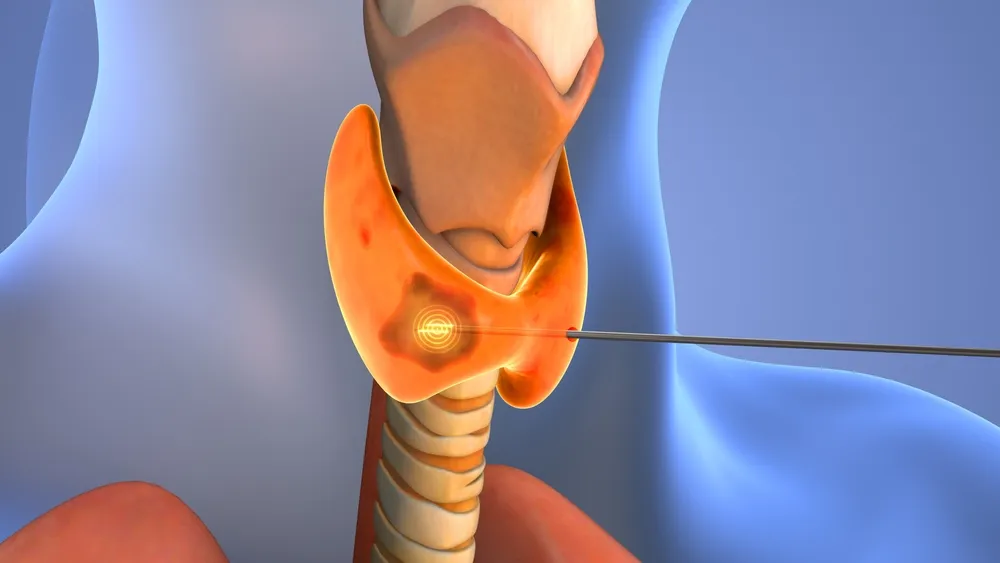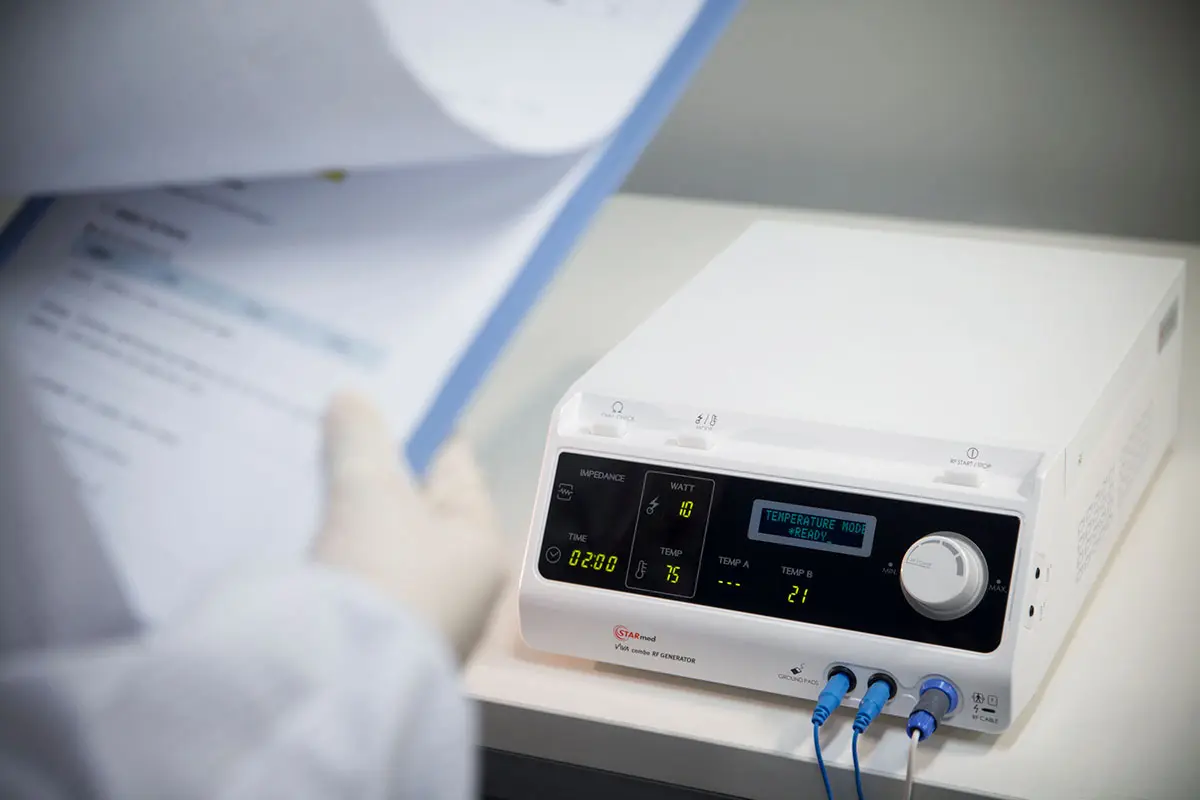TL;DR: The American Thyroid Association’s 2025 guidelines introduce a pivotal shift in how clinicians manage low-risk papillary thyroid carcinoma (PTC). For the first time, radiofrequency ablation (RFA) is recognized as a potential alternative to surgery or active surveillance in carefully selected patients.
- Most symptoms of thyroid nodule cancer are absent or nonspecific; many PTCs are found incidentally.
- When present, signs of malignant thyroid nodules may include neck swelling, hoarseness, difficulty swallowing, or lymphadenopathy.
- Recommendation 11 of the new ATA guidelines endorses both active surveillance and RFA for low-risk cT1aN0M0 PTC.
- RFA offers a minimally invasive treatment option with encouraging outcomes and fewer complications than surgery.
- STARmed America is at the forefront of thyroid RFA technology and clinician education.
When symptoms of cancerous thyroid nodules appear, most clinicians assume surgery is the most logical next step. For many decades, that was true. However, the American Thyroid Association’s new 2025 guidelines on differentiated thyroid cancer include a noteworthy update.
For the first time, ultrasound-guided radiofrequency ablation (RFA) is recognized as a management option for select patients with low-risk papillary thyroid carcinoma (PTC). This development reflects a shift toward less invasive treatments for small, indolent thyroid cancers.
Papillary thyroid carcinoma in particular accounts for about 90% of all thyroid cancers. The ATA’s new guidelines address when clinicians might consider active surveillance or percutaneous ablation instead of immediate surgery for low-risk PTC.
In this blog, we will share a review of how to recognize cancerous thyroid nodules and their symptoms. Then, we’ll explain what the 2025 ATA update means for clinical practice.
Signs and Symptoms of Cancerous Thyroid Nodules (Papillary Thyroid Carcinoma)
A common patient question is, “what are the symptoms of cancerous thyroid nodules?”
In practice, thyroid nodule cancer symptoms are often minimal or absent in early disease. Papillary thyroid carcinoma typically presents as a small, asymptomatic thyroid nodule. More often than not, PTC is found incidentally on imaging or during a routine exam. In fact, most malignant thyroid nodule symptoms do not manifest until the tumor grows or affects adjacent structures.
One study noted that only about 38% of thyroid cancers produce any clinical symptoms. That means the majority of patients have no overt symptoms of thyroid nodule cancer. Thus, the signs of malignant thyroid nodules can be subtle or entirely absent.
When symptoms do occur, they may include:
- Noticeable neck swelling
- A fixed nodule that gradually enlarges
- Unexplained hoarseness
- Difficulty swallowing
- Enlarged cervical lymph nodes
It is important to note that these findings are not specific to thyroid cancer. Most small nodules (including many PTCs) remain asymptomatic. Thus, clinicians rely on risk factors, ultrasound features, and fine-needle aspiration (FNA) biopsy results to determine if a thyroid nodule is suspicious.
Ultimately, signs of thyroid nodule cancer are often absent in low-risk PTC.
ATA 2025 Recommendation 11: Active Surveillance and RFA in Low-Risk PTC
Recommendation 11 of the 2025 ATA guidelines explicitly expands management options for patients with very low-risk papillary thyroid carcinoma. Specifically, the guidelines discuss cT1aN0M0, meaning a tumor ≤1 cm confined to the thyroid, with no spread to lymph nodes or distant sites.
The guideline has two parts, which we’ll break down below.

Active Surveillance
According to the ATA: “Active surveillance may be offered as an appropriate management option for some patients with cT1aN0M0 PTCs.” However, the choice must begin with careful shared decision-making with the patient.
This reaffirms that carefully selected patients can be monitored with serial ultrasounds instead of immediate surgery. This approach is supported by evidence that small, low-risk PTCs often have an indolent course. Studies have shown that outcomes like thyroid cancer mortality, distant metastases, and recurrence are similarly low for active surveillance versus immediate surgery in these patients.
Active surveillance avoids surgery-related risks and may be especially suitable for older patients or those with comorbidities.
RFA as an Alternative to Surgery
The ATA guidelines state: “ultrasound-guided percutaneous ablation may be considered as an alternative to active surveillance or resection for cT1aN0M0 PTC in selected patients.”
In other words, radiofrequency ablation of a small papillary thyroid cancer is now acknowledged as a potential alternative to either watching it or removing it surgically. Note that this is a conditional recommendation. While early data looks promising, long-term outcomes are still being studied.
Nonetheless, the inclusion of RFA in the ATA guidelines legitimizes a minimally invasive treatment approach that has been gaining traction for treating low-risk thyroid cancers.
Embracing RFA in Thyroid Cancer Management
Surgery does remain the gold standard for most thyroid malignancies. Even so, the acknowledgment of RFA as an alternative for low-risk PTC validates years of research and clinical experience. The incorporation of RFA into the ATA’s 2025 guidelines marks an important evolution in thyroid cancer care.
As evidence continues to accumulate, we anticipate RFA will become a more mainstream component of thyroid cancer management in the years ahead.
STARmed America has established itself as a trusted authority in this field, as a leading provider of RFA technology and physician education. Learn more about thyroid nodule RFA treatments utilizing STARmed technology.





